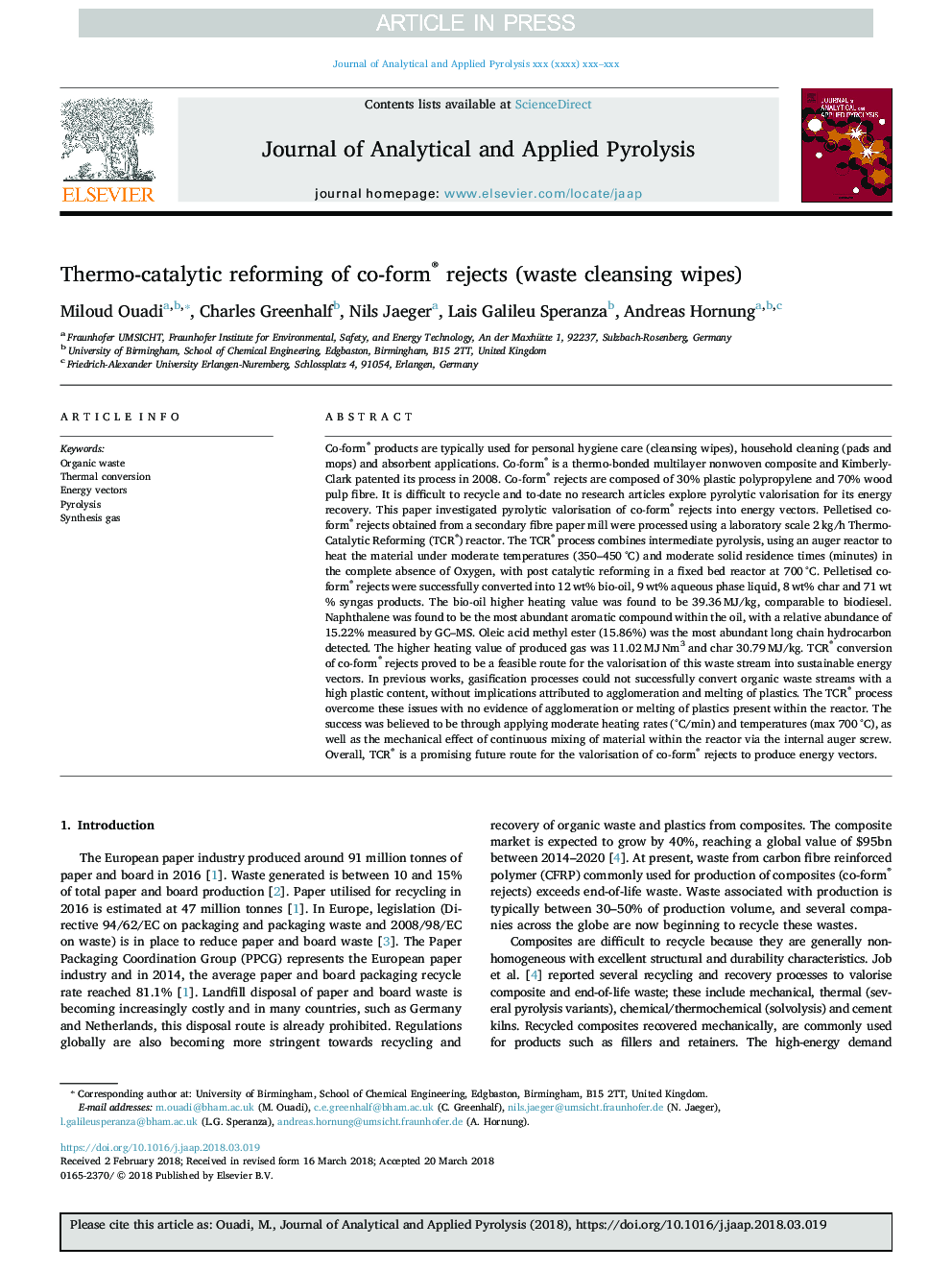| Article ID | Journal | Published Year | Pages | File Type |
|---|---|---|---|---|
| 7606269 | Journal of Analytical and Applied Pyrolysis | 2018 | 7 Pages |
Abstract
Co-form® products are typically used for personal hygiene care (cleansing wipes), household cleaning (pads and mops) and absorbent applications. Co-form® is a thermo-bonded multilayer nonwoven composite and Kimberly-Clark patented its process in 2008. Co-form® rejects are composed of 30% plastic polypropylene and 70% wood pulp fibre. It is difficult to recycle and to-date no research articles explore pyrolytic valorisation for its energy recovery. This paper investigated pyrolytic valorisation of co-form® rejects into energy vectors. Pelletised co-form® rejects obtained from a secondary fibre paper mill were processed using a laboratory scale 2â¯kg/h Thermo-Catalytic Reforming (TCR®) reactor. The TCR® process combines intermediate pyrolysis, using an auger reactor to heat the material under moderate temperatures (350-450â¯Â°C) and moderate solid residence times (minutes) in the complete absence of Oxygen, with post catalytic reforming in a fixed bed reactor at 700â¯Â°C. Pelletised co-form® rejects were successfully converted into 12â¯wt% bio-oil, 9â¯wt% aqueous phase liquid, 8â¯wt% char and 71â¯wt% syngas products. The bio-oil higher heating value was found to be 39.36â¯MJ/kg, comparable to biodiesel. Naphthalene was found to be the most abundant aromatic compound within the oil, with a relative abundance of 15.22% measured by GC-MS. Oleic acid methyl ester (15.86%) was the most abundant long chain hydrocarbon detected. The higher heating value of produced gas was 11.02â¯MJâ¯Nm3 and char 30.79â¯MJ/kg. TCR® conversion of co-form® rejects proved to be a feasible route for the valorisation of this waste stream into sustainable energy vectors. In previous works, gasification processes could not successfully convert organic waste streams with a high plastic content, without implications attributed to agglomeration and melting of plastics. The TCR® process overcome these issues with no evidence of agglomeration or melting of plastics present within the reactor. The success was believed to be through applying moderate heating rates (°C/min) and temperatures (max 700â¯Â°C), as well as the mechanical effect of continuous mixing of material within the reactor via the internal auger screw. Overall, TCR® is a promising future route for the valorisation of co-form® rejects to produce energy vectors.
Related Topics
Physical Sciences and Engineering
Chemistry
Analytical Chemistry
Authors
Miloud Ouadi, Charles Greenhalf, Nils Jaeger, Lais Galileu Speranza, Andreas Hornung,
